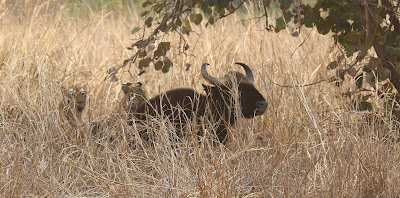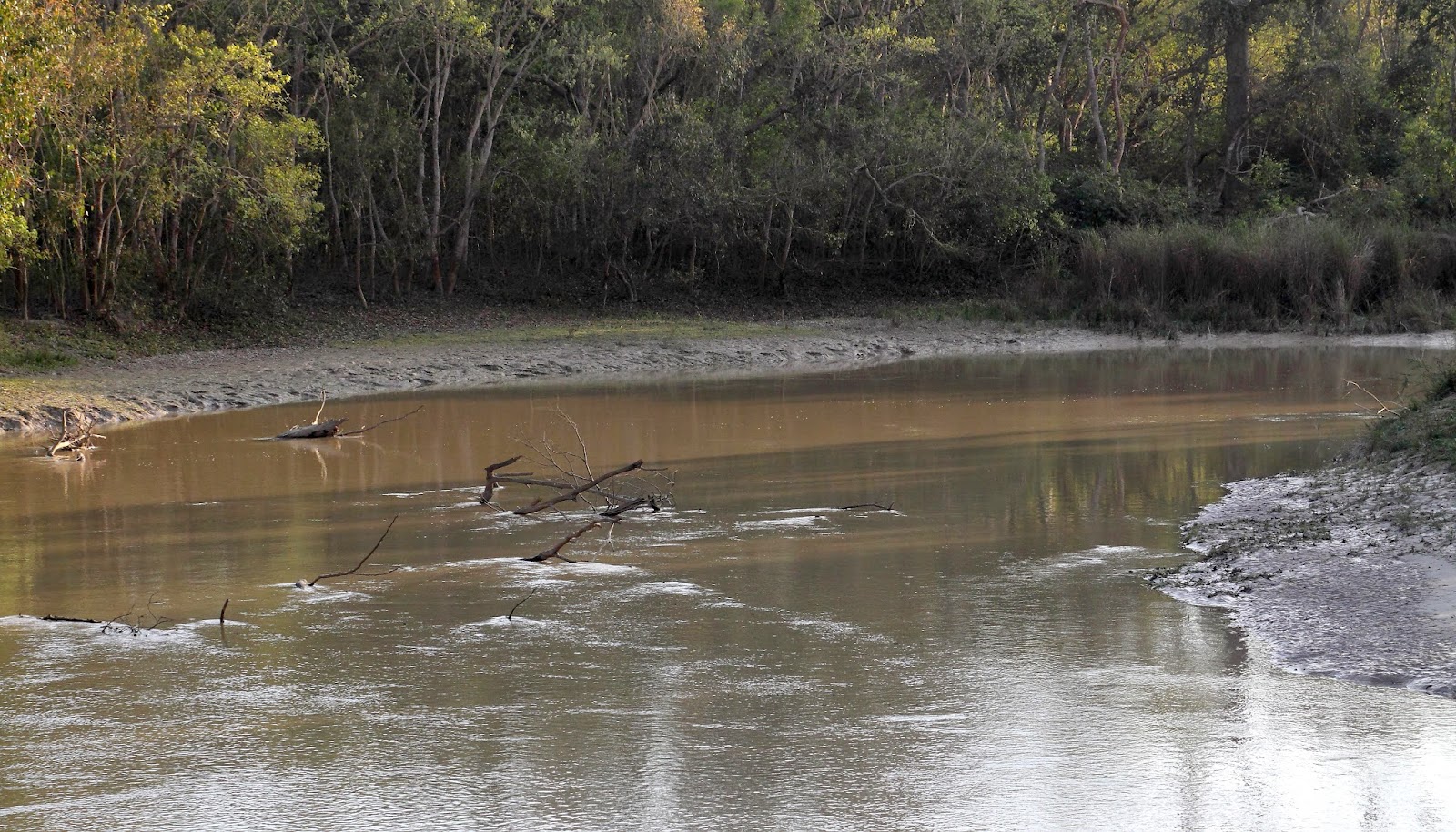With its more than 500 wildlife sanctuaries and 48 tiger reserves spread all over the country, India offers ample opportunities to photograph its amazing flora and fauna. Incidentally India is home to the famous Royal Bengal Tiger of which about 1750 roam in the Indian wilds as on today : the largest number of tigers living in the wild the world over. India is home to other big cats also like the Asiatic Lion and the Leopard. The only exception is the Cheetah which went extinct from India somewhere around late 1800's.
Apart from the big cats India is home to a variety of herbivores : the deer and antelopes , wild elephants, the most endangered one horned Rhino of which only 3000 are left live in the wild, the Sloth Bear and the Dhole or the Indian Wild Dog. The avian species are also numerous roughly more than 500 native and many migratory which visit during October to March every year.
These tips are general in nature and describe my first hand experience of photographing wildlife in the wildlife reserves of the north ( Dudhwa National Park, Katarnia Ghat and Kishenpur Wildlife Sanctuaries) and central India. ( Bandhavgarh , Kanha, and Tadoba Tiger Reserves)
Best Time and Places: I find mid February to March end as the best time for visiting wild life parks of India. The weather around this time is very pleasant and with the onset of spring season the jungles are in their most beautiful phase. However for tiger photography I would suggest April and May when the day time heat reaches to its extreme and thus increasing chances of sighting tigers around waterholes to the maximum.
Corbett , Dudhwa and Manas in the north and northeast India, Bandhavgarh, Kanha, and Tadoba in the central India and Ranthambhore in the west India are some of the best places for wildlife photography. In southern India one may like to visit Bandipur, Nagarhole and Periyar .
Equipment : This needs no detailing as I think every wild life photographer knows already about it.
In this age of digital photography some very good systems are on the offer by the well known photo equipment makers like Nikon, Canon and Sony. One may choose as per his personal liking and budget. Being a Canon aficionado I use 6D and 5D Mark III bodies with EF 300 mm F/2.8 L II prime and a 70-300 mm f /4-5.6 L zoom lens. However I must emphasize on having the right kind of equipment, the camera body and glass, for this genre of photography. Birders need at least a lens of 500 mm focal length and a camera body having fast focus acquisition, tracking and burst shutter capabilities.
Know the basics of wildlife behaviour: Like the ISO, Aperture and shutter speed being the triumvirate of any photography, the right photo equipment, knowledge of wildlife behaviour and patience make the three main pillars of successful wild life photography.
I will briefly share my experience :
Birds: As a general rule the smaller the bird the more agile and unstable it is like the GBE's, Pittas, Finches and the Orioles. The reverse is true of big birds like Raptors , Owls and Cranes . However all
migratory birds are wary of humans and maintain a very safe distance preferring the middle of the water body.
Deer and Antelopes: They also like to maintain a safe distance from humans. But these are very curious animals. So when photographing them stop in your place and do not chase. And by all probabilities their curios nature will make them to stop at a safe distance and look back at you. That should be your moment to click.
Tiger and Leopard : Tigers are very stable while resting and that gives ample time to photograph them.
However a tiger walking on or crossing a jungle road requires some understanding of the feline behaviour. Tigers are supremely confident of themselves and seldom glance to their right or left while walking but when changing the track or crossing a jungle road they do , for once, look back or glance to the side where any object may be. That should be the moment of click. That is how I got a good shot of the famous and equally shy Mahahman tigress of Bandhavgarh in 2015.
Leopards are most elusive. It is just a matter of chance that you may get them walking on the jungle road at comfortable distances for photography.
Dholes or Indian Wild Dogs: They do not fear humans. So its easy to photograph them.
Sloth Bear: During summer season , in early mornings , you may find him at close distances. But take care and be very careful of this most unpredictable beast in the wild.
Apart from the big cats India is home to a variety of herbivores : the deer and antelopes , wild elephants, the most endangered one horned Rhino of which only 3000 are left live in the wild, the Sloth Bear and the Dhole or the Indian Wild Dog. The avian species are also numerous roughly more than 500 native and many migratory which visit during October to March every year.
These tips are general in nature and describe my first hand experience of photographing wildlife in the wildlife reserves of the north ( Dudhwa National Park, Katarnia Ghat and Kishenpur Wildlife Sanctuaries) and central India. ( Bandhavgarh , Kanha, and Tadoba Tiger Reserves)
Best Time and Places: I find mid February to March end as the best time for visiting wild life parks of India. The weather around this time is very pleasant and with the onset of spring season the jungles are in their most beautiful phase. However for tiger photography I would suggest April and May when the day time heat reaches to its extreme and thus increasing chances of sighting tigers around waterholes to the maximum.
Corbett , Dudhwa and Manas in the north and northeast India, Bandhavgarh, Kanha, and Tadoba in the central India and Ranthambhore in the west India are some of the best places for wildlife photography. In southern India one may like to visit Bandipur, Nagarhole and Periyar .
Equipment : This needs no detailing as I think every wild life photographer knows already about it.
In this age of digital photography some very good systems are on the offer by the well known photo equipment makers like Nikon, Canon and Sony. One may choose as per his personal liking and budget. Being a Canon aficionado I use 6D and 5D Mark III bodies with EF 300 mm F/2.8 L II prime and a 70-300 mm f /4-5.6 L zoom lens. However I must emphasize on having the right kind of equipment, the camera body and glass, for this genre of photography. Birders need at least a lens of 500 mm focal length and a camera body having fast focus acquisition, tracking and burst shutter capabilities.
Know the basics of wildlife behaviour: Like the ISO, Aperture and shutter speed being the triumvirate of any photography, the right photo equipment, knowledge of wildlife behaviour and patience make the three main pillars of successful wild life photography.
I will briefly share my experience :
Birds: As a general rule the smaller the bird the more agile and unstable it is like the GBE's, Pittas, Finches and the Orioles. The reverse is true of big birds like Raptors , Owls and Cranes . However all
migratory birds are wary of humans and maintain a very safe distance preferring the middle of the water body.
Deer and Antelopes: They also like to maintain a safe distance from humans. But these are very curious animals. So when photographing them stop in your place and do not chase. And by all probabilities their curios nature will make them to stop at a safe distance and look back at you. That should be your moment to click.
Tiger and Leopard : Tigers are very stable while resting and that gives ample time to photograph them.
However a tiger walking on or crossing a jungle road requires some understanding of the feline behaviour. Tigers are supremely confident of themselves and seldom glance to their right or left while walking but when changing the track or crossing a jungle road they do , for once, look back or glance to the side where any object may be. That should be the moment of click. That is how I got a good shot of the famous and equally shy Mahahman tigress of Bandhavgarh in 2015.
Leopards are most elusive. It is just a matter of chance that you may get them walking on the jungle road at comfortable distances for photography.
Dholes or Indian Wild Dogs: They do not fear humans. So its easy to photograph them.
Sloth Bear: During summer season , in early mornings , you may find him at close distances. But take care and be very careful of this most unpredictable beast in the wild.
Wild Boar: Very intelligent and most unstable. They tend to run away the moment they see you. However if you spot them standing then do not pick up or point your camera in a sudden motion or hurriedly. The key is to remain motionless and let the animal indulge in its activity , An then to pick up your camera slowly and click.
<script async src="https://pagead2.googlesyndication.com/pagead/js/adsbygoogle.js?client=ca-pub-2331515138562989"
crossorigin="anonymous"></script>






































.JPG)


.jpg)












